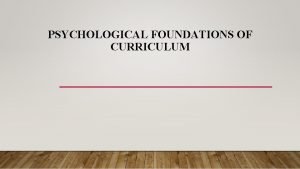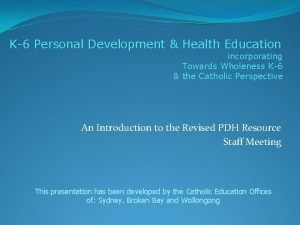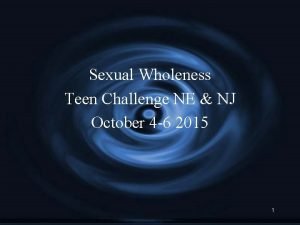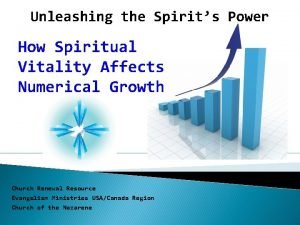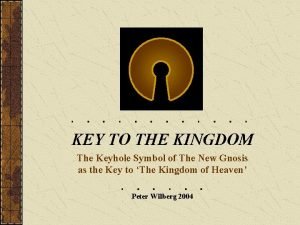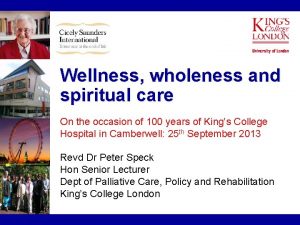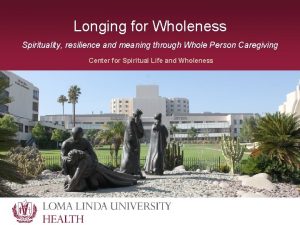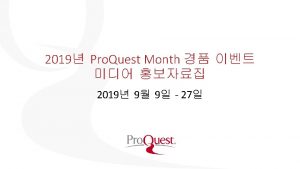The Quest for Meaning and Wholeness Spiritual and










- Slides: 10

The Quest for Meaning and Wholeness: Spiritual and Religious Connections in the Lives of College Faculty Jennifer A. Lindholm

CHAPTER 1: Spirituality and Higher Education - Chapter one offers sufficient background on the topic of spirituality in higher education, including introduction to the measures that provide the book’s focal points. - The United States is a spiritually engaged nation - Nine in ten adults (91%) believe in God or a Universal Spirit Fully 80 percent report that religion is “important” in their lives Just over two thirds (67%) say they reflect on the meaning of life “often” Only 15 percent report that they are neither spiritual nor religious -

CHAPTER 2: The Meaningfulness of Spirituality and Religion in Faculty Members’ Lives - - In this chapter, in Table 2. 1, research shows that women faculty are generally more likely than men to characterize themselves as spiritual African American faulty members are most inclined to characterize themselves as spiritual “to a great extent” Middle-aged faculty are also comparatively more inclined than their younger or older colleagues to characterize themselves as highly spiritual, as are those who have self-described “conservative” political beliefs An additional 19 percent consider themselves “somewhat” religious 16 percent say they are “not at all” religious

CHAPTER 2 CONT. - “Spiritual and Religious”: 57 percent of four-year college and university faculty self-identify, at least to “some” extent, as both spiritual and religious - “Religious but not Spiritual”: A very small proportion (roughly 2%) of faculty at four-year colleges and universities embrace the personal characterization “religious but not spiritual” - “Spiritual but not Religious”: Within the faculty of four-year colleges and universities, 21 percent selfidentify as spiritual but not religious - “Not Spiritual and Not Religious”: Roughly 19 percent of four-year college and university faculty can be considered disengaged both spiritually and religiously

CHAPTER 3: Spiritual Quest - - - What is spiritual quest? A measure that reflects an engagement in the search for meaning and purpose in life (p. 69). “Attaining inner harmony” “Developing a meaningful philosophy of life” “Attaining wisdom” Quest and Academic Work: Academic work is meaningful among faculty because of the interconnections between questing and faculty reflections Institutional Type Differences Example of one telling quote from a faculty member (p. 82).

CHAPTER 4: Ethic of Caring, Ecumenical Worldview, and Charitable Involvement - Three spiritual-related measures: - Ethic of Caring - Ecumenical Worldview - Charitable Involvement - Challenges to Caring and Connectedness Within the Academy - Example of one faculty noting that the academy is a dark place (p. 108).

CHAPTER 5: Religious Faith and Perspectives - - Four measures of “religiousness” are the focal point in Chapter 5 Religious Commitment: this measure is an “internal” measure comprising twelve attitudinal and belief items. Religious Engagement: is an “external” measure that represents the behavioral counterpart to Religious Commitment. - Religious Skepticism: is a measure which is comprised of nine items - Religious Struggle: is a composite measure of the individual’s responses to seven survey items

CHAPTER 6: Equanimity - What does the title of this chapter even mean? - The importance of equanimity for individuals - The Equanimity measure is comprised of five items: - “been able to find meaning in times of hardship, ” - “felt at peace/centered, ” - “I feel good about the direction in which my life is headed, ” - “seeing each day, good or bad, as a gift, ” - and “being thankful for all that has happened to me” - What do these findings illustrate?

CHAPTER 7: Higher Education and the Life of the Faculty Spirit - Spirituality and Religion in the Lives of College Faculty - 80 percent of faculty who teach undergraduates consider themselves spiritual - Variations are based on demographic differences - Quest inclinations - Undergraduate students are the one population that faculty have an influence on - Faculty members are at the heart of the academic community - Challenges that faculty encounter and a sense of wholeness are critical to understand

FINAL THOUGHTS on The Quest for Meaning and Wholeness Reference: Jennifer A. Lindholm (2014). The Quest for Meaning and Wholeness: Spiritual and Religious Connections in the Lives of College Faculty. Jossey-Bass.

